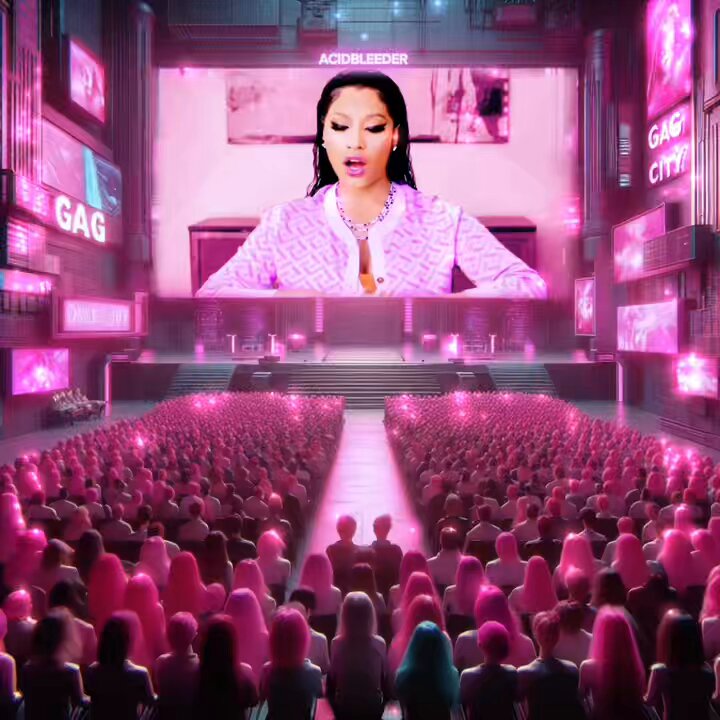
Participatory IP
Worldbuilding with fans
Participatory IP • Shared worldbuilding in web2 • How web3 enables next-level immersion
Participatory IP can create virtuous bonds between fans and creators, and web3 can help creators facilitate network effects that expand their ecosystem.
We recently had an interesting conversation with Simon Clowes, a Crypto Punks community member and creative director at Apple TV on Los Fomos FM, about the future of entertainment & immersive IP.
While we agreed that the future of content is all about immersion, I thought a lot about my own definition of immersion. My Conclusion: immersion refers to the level of belonging you feel with a community. This immersion can be achieved through participation, either through purchasing assets that connect you with a brand (eg. limited-edition, themed GTA skins) or through time and effort invested into experiences or curation, such as creating fan pages on social networks or organising meet-ups.
By design, themed virtual (3D) spaces where you can purchase assets have a high level of immersion. You own something, your avatar wears or uses it, and you are a part of the experience. Additionally, experiences you and others collectively design or contribute add another layer of immersion. An example is the recent launch of Nicki Minaj's album. With specific messaging and a Roblox activation, Nicki kicked off a participatory IP world co-created with fan input.
While the fan co-creation part was arguably more of a coincidence, there’s much to learn from this example.
Nicki Minaj created a Roblox world titled ‘Gag City’ for the launch of her new album. The pink world offered lots of digital merch and easter eggs for visiting fans. If visiting the world was the first layer of immersion, buying skins and assets and receiving presents was the second level. Wearing the branded items allowed fans to identify with Nicky’s brand, and the connections with other fans (including their endorsements) strengthened their position in the community.
It all started with a tweet prior to the launch of Nicki’s Gag City in Roblox - view the tweet below - after which fans started adding their own twist on Gag City.
The concept of Nicki’s album as a place (physical or virtual) was picked up by fans. It caused a chain of AI-generated images that each displayed Gag City according to their interpretation and prompts (shots of realistic, utopian-looking, pink cities). The images were accompanied by descriptions that portrayed Gag City as a place, further elevating the brand image from a mere album to an actual city.

With more content rolling in, Nicki’s fans collectively created a perceived fantasy world—so much so that it pulled more observers, even brands, into the mix. Where does this desire to participate originate from? I argue it’s a mix of the need to self-express, to belong, and to feel relevant.
What Nicki’s fans created was so powerful that it went far beyond an album activation—it outlived it. I hypothesise that collectively built worlds are stronger and, therefore, remain longer. They attract more attention and mindshare, require collective efforts and, therefore, emotions, and are less easily forgotten.
I’m not a fan of slapping web3 on everything, but in this case, I want to highlight how ownership could help artists like Nicky achieve actual network effects going forward. Web3-native IP is, by design, participatory due to its collaborative and ownable nature.
Web3 can generate network effects for brands like Nicki, meaning growth that benefits all participants and sustainably strengthens the fan ecosystem.
How?
Know your super fans and elevate the strongest contributors
Strategically involve super fans in activations
Co-owned contributions
For example, knowing who brought new visitors to her Roblox world and triggered new merch purchases, Nicki could have strategically highlighted those fans’ accounts. However, while there are ways to identify fan contributions within one service, she cannot cross-reference data across platforms.
If fans owned their contributions and earned financial and/or reputational rewards, Nicki could strategically incentivise them. Fans would naturally feel more responsible for performing better, as their reputation is at stake. Reputation, besides financial rewards, is a big deal.
That’s not to say that everything needs monetisation, and doing something for pure passion is not enough. It’s a fact, though, that fans have put in work, and what they get in return is, at most, attention, potentially resulting in reputation and status. This, in turn, is monetisable.
But think about the magazines that published Nicki’s activation and showed fan-generated images. If your fan art makes it to, e.g., TechChrunch and generates clicks and income, I argue that fans receiving their fair share of it would be in the creator's interest.
Wouldn’t it be desirable for Nicki to know about their contributions so she can strategically collaborate with her super contributors who bring her the most eyeballs and new fans? Overall, network effects offer a more efficient way to grow your ecosystem.
In my utopian version of Nicki’s empire, we have a worldwide super fan club that Nicki Minaj fans aspire to. This would be a place where Nicki can track fan contributions and their status. Naturally, this would be an internet-native community graph that is not limited by the borders of the virtual world but extends far beyond them.
Hint: that's what we’re building.
DC, if you’re curious or have thoughts to share! 🌶🌶🌶






 216.6K
216.6K


